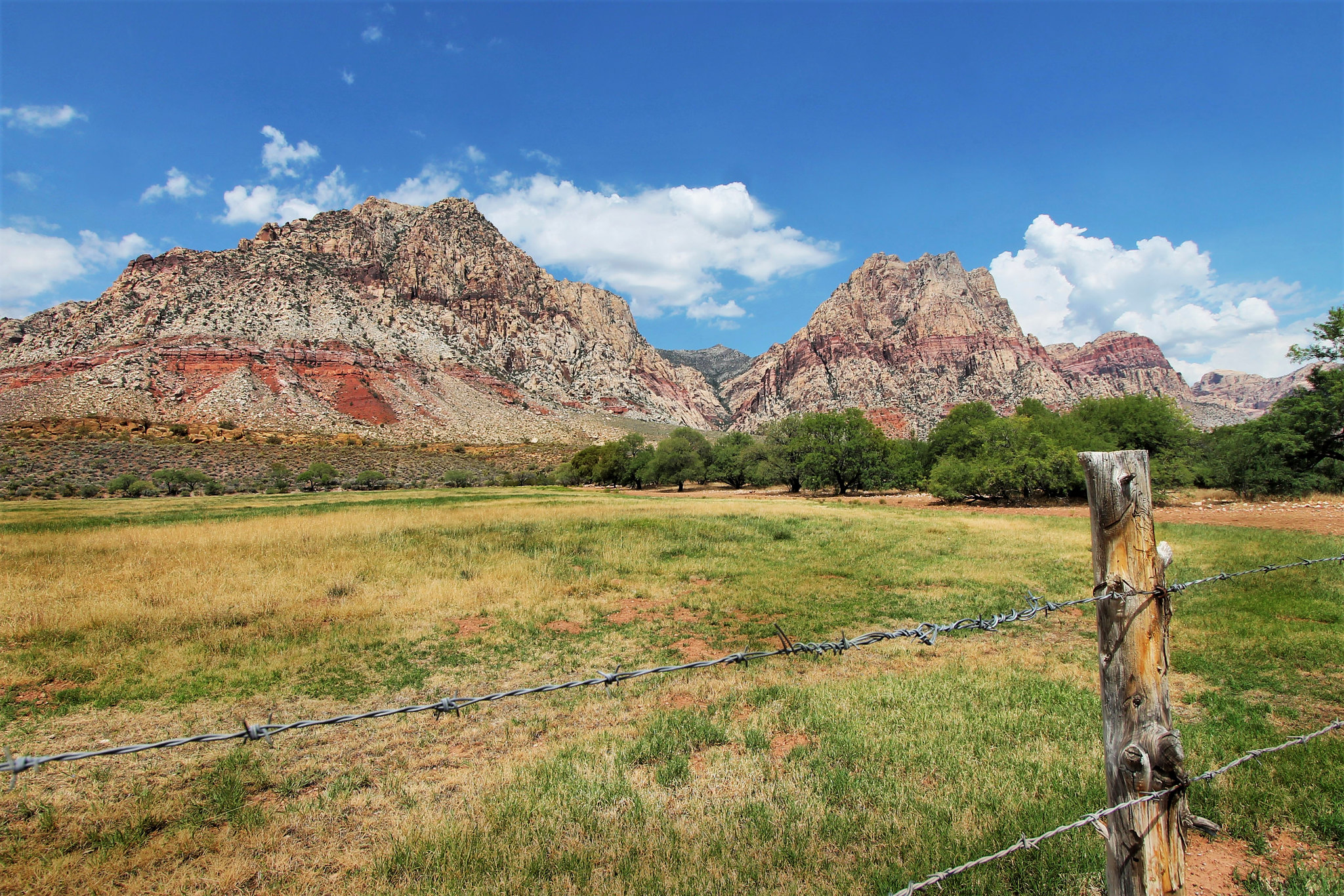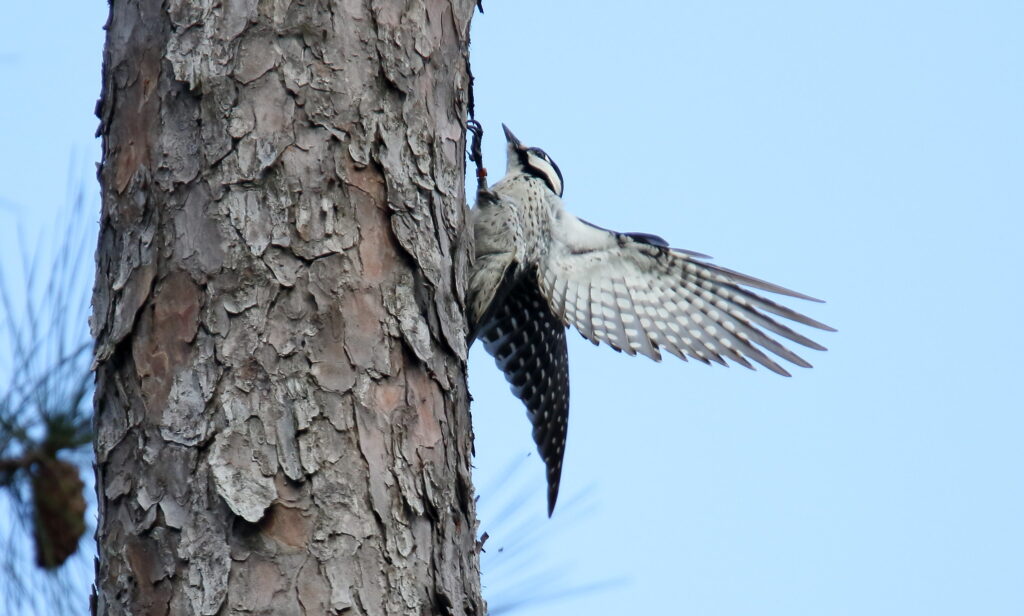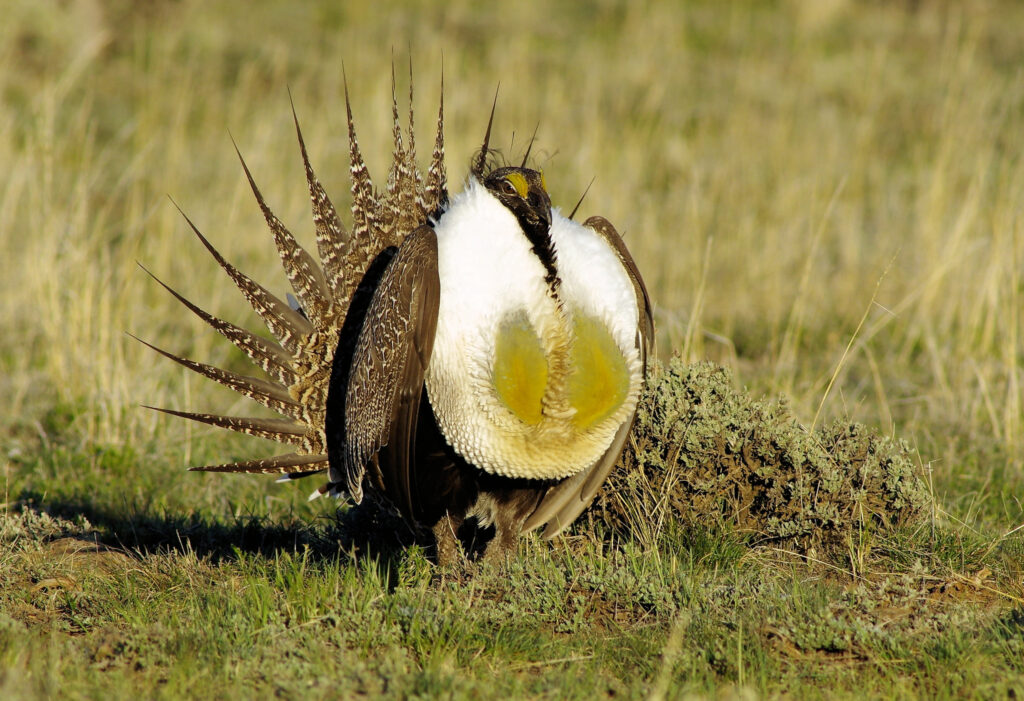“Conservation will ultimately boil down to rewarding the private landowner who conserves the public interest.” These words were written in 1934 by Aldo Leopold, the father of scientific wildlife management. In the same essay, Leopold called himself a “political and economic dreamer,” acknowledging that, in his day, society lacked both the appetite and the tools for rewarding private landowners for conserving wildlife.
Eighty-six years later, America has begun to understand what Leopold meant when he wrote that “[t]he implements for restoration lie not in the legislature, but in the farmer’s toolshed.” Although many of our historic battles over wildlife management have focused on public lands, the current frontier of conservation is on private lands—especially the working lands that are economically productive and support an individual’s livelihood, such as farms, ranches, and timberlands. In the continental United States, 74 percent of all land is privately owned. Among species listed as threatened or endangered under the Endangered Species Act, two-thirds can be found on privately owned land, as can hundreds more species at risk of being listed. Private land provides critical wildlife habitat in every state, including many of the most imperiled and ecologically valuable areas. For example, more than 75 percent of remaining wetlands and 80 percent of remaining grasslands in the United States are located on private land.
The historic approach to conserving endangered species focused on public land and largely used federal legislation and command-and-control policies. Statutes such as the ESA prohibit actions that would harm listed wildlife, and land management statutes such as Federal Land Policy and Management Act and the National Forest Management Act, both enacted in 1976, require public land managers to apply these laws. This has resulted in both conservation successes and failures on public land, but the history of efforts to bring this approach onto private land is unequivocally one of failure, punctuated by conflict, litigation, recriminations, and distrust. At its worst, federal wildlife management created perverse incentives that encouraged landowners to mismanage their land in order to prevent the appearance of any endangered species upon their property.
This is because, in the vast majority of cases, species are in decline and perhaps in danger of future ESA listing because of loss of habitat due to development, mostly on private land. Thus, as Leopold understood, landowners ultimately bear much of the cost of conservation. In fact, many people criticize the ESA for functioning as a regulatory land-use law. This tension between commercial development and wildlife values has been the root of most bitter conflicts over wildlife.
Conservation will ultimately boil down to rewarding the private landowner who conserves the public interest.
As Leopold understood, in our system of private property, the cost of conserving land must fall in large part upon the owners of that land. But today, command-and-control regulation is not the only option for conservationists. Thanks to improving incentives, voluntary conservation on private lands has expanded greatly in recent years. Incentives for voluntary action are emerging as a powerful tool for aligning landowner interests with wildlife recovery and improving conditions for species while avoiding listings under the ESA and the costs that federal regulation can bring.
The conservation successes discussed in this essay illustrate that by extending at-risk species conservation’s historic regulatory approach to also include incentives and financial support for conservation on private lands, we can fulfill the public’s interest in maintaining and restoring healthy wildlife populations. This essay will focus on two bird species in particular: the red-cockaded woodpecker and the greater sage-grouse, which exemplify the importance of voluntary habitat conservation and how the right incentives can encourage species recovery.
Red-Cockaded Woodpecker
The red-cockaded woodpecker lives exclusively in pine forests in the southeastern United States. Red-cockaded woodpeckers breed in monogamous pairs but live in larger family groups: unattached males remain with their parents as “helpers” caring for subsequent clutches of eggs, whereas young females disperse in search of new territory. Population estimates for the species are based on the number of breeding groups, or “active clusters,” rather than on a count of individual birds.
It is thought that at the time of European contact, the red-cockaded woodpecker numbered between 1 million and 1.6 million active clusters. By the time of its listing as an endangered species in 1970, the species had declined to approximately 4,000 active clusters. The primary threat to the species is a lack of suitable habitat. Red-cockaded woodpeckers are highly reliant on mature pine forests, which provide large enough trees for the birds to excavate the cavities that they live in. Frequent cutting of timber and the conversion of old longleaf forests to commercial spruce and loblolly forests has reduced the number of trees large enough to support such cavities, and fire suppression has made it easier for other species to outcompete the woodpeckers. As a result, commercial pine forests are virtually devoid of red-cockaded woodpeckers. In addition, habitat fragmentation has made the species more susceptible to other threats such as natural disasters and lack of genetic variation.
Conservation efforts began with development of a recovery plan in 1979, but at that time it was expected that most of the recovery effort would occur on public land. Little progress was made in the first decade, and in 1990 the population reached a historic low of just 1,981 active clusters. One reason for this is that many landowners were hostile to red-cockaded woodpeckers. Fearing regulation under the ESA, landowners had an incentive to plant smaller, faster-growing species of pine and aggressively thin forests to prevent the maturating of suitable nesting trees for red-cockaded woodpeckers. Their concern was that if they were to cut down a tree occupied by the woodpeckers, they could be held liable for taking an endangered species. In 1986, an outside review of the recovery program warned that the species was on a course toward being “restricted to state and national forests and other public lands.” This was the state of affairs despite the fact that there was no designated critical habitat for red-cockaded woodpecker—the threat of regulation of take under the ESA alone was enough to inspire fear among landowners.
In the 1990s, various conservation incentives and ESA regulatory assurances began to yield conservation gains on private land and reverse the red-cockaded woodpecker’s decline. In 1992, a private lands conservation strategy was developed. A driving force behind this was the U.S. Department of Defense, which was unable to carry out its training mission on several major installations within red-cockaded woodpecker habitat, jeopardizing national defense. At Fort Bragg in the sandhills region of North Carolina, the Defense Department, U.S. Fish and Wildlife Service, The Nature Conservancy, and others collaborated to find a solution. By financing protection of woodpeckers on private land, they were able to protect woodpecker habitat, enable the military to meet its training objectives, and put money in landowners’ pockets. As a result of this collaboration, in 1995 the Fish and Wildlife Service developed Safe Harbor Agreements, a type of ESA regulatory assurance for landowners working to conserve woodpeckers, and this new tool spread rapidly across the woodpecker’s range. Today, there are more than 400 landowners conserving 2.5 million acres of red-cockaded woodpecker habitat under ESA Safe Harbor Agreements alone. These programs were aided by the invention in the 1980s of artificial nesting cavities, enabling active management of red-cockaded woodpecker habitat to accelerate colonization and establishment of new active clusters.
Today, the red-cockaded woodpecker population has greatly expanded from its historic low. In 2006, the last year a five-year review was completed, the population had risen to 6,105 active clusters. (An updated review is now in progress.) The 2003 revision to the red-cockaded woodpecker recovery plan foresaw delisting between 2050 and 2075, but recent process has accelerated recovery and delisting may now be possible by 2030 or sooner. One challenge for recovery is that the species remains limited by the availability of cavities, and red-cockaded woodpecker habitat is management-intensive. The forest must maintain enough old, large trees for woodpecker cavities, controlled burning is needed to maintain woodpecker forage and prevent the development of forest too dense for woodpeckers, and dead snags must be left standing. Our ability to continue to fund the management needed to maintain and expand red-cockaded woodpecker habitat will ultimately determine whether the species’ recovery is a long-term success.
Greater Sage-Grouse
Hundreds of miles to the west of the red-cockaded woodpecker lives the greater sage-grouse. Today the bird’s range sprawls across eleven western states and over 165 million acres—but this represents a decline of 44 percent from its historic range of 297 million acres.
The greater sage-grouse is a sagebrush-obligate species, feeding exclusively on sagebrush in winter and relying on sagebrush for cover from predators during nesting season. Widely recognized as the iconic species of the “sagebrush sea,” the grouse is an ecological indicator species for hundreds of other species that share the same ecosystem, including the pygmy rabbit, pronghorn, badger, loggerhead shrike, mule deer, golden eagle, western burrowing owl, greater shorthorned lizard, and sage thrasher.
The greater sage-grouse was first described by Meriwether Lewis in a journal entry dated May 2, 1806, which noted that the species is “invariably found in the plains.” Its population is thought to have once been as high as 16 million, but the species declined as settlers spread across the plains through the nineteenth century, and by the early 1900s, when perhaps one million sage-grouse remained, people began to take notice. Prominent conservationist William Temple Hornaday organized a campaign against overhunting of sage-grouse. In 1916, he published a pamphlet titled “Save the Sage Grouse from Extinction: A Demand from Civilization to the Western States,” which was the first published prediction of the species’ possible extinction. Awareness of sage-grouse’s decline gradually spread, and in 1954 the Western Association of State Fish and Wildlife Agencies established the Sage and Columbian Sharp-tailed Grouse Technical Committee to study sage-grouse and make recommendations. Although widespread hunting of greater sage-grouse was already on the decline, new threats were emerging in the form of habitat fragmentation due to land subdivision, exurban development, oil and gas development, wildfires, and the spread of invasive species and conifers. In 1994, alarms were sounded regarding a possible ESA listing of the greater sage-grouse, and conservation efforts began in earnest. By 1995, every state in the sage-grouse’s range had launched a conservation program to benefit the species.
Achieving conservation on private lands requires patience and partnership-building among government agencies, nonprofit organizations, and, of course, landowners themselves.
Accurately counting greater sage-grouse is difficult. Estimates are generally based on counting breeding males present on leks (mating areas) each spring. The range-wide population hit a low point in 2013, when surveys counted 48,641 breeding males, a decline of 56 percent from 109,990 in 2007. The most recent comprehensive, range-wide survey of greater sage-grouse was conducted in 2015, and it documented a sharp increase to 85,674 breeding males. This has been extrapolated to suggest an overall population of 424,645.
More than 50 percent of the greater sage-grouse’s range is on public land managed by the Bureau of Land Management or the U.S. Forest Service. But throughout its range, there are opportunities for conservation work by private landowners. In the western part of the species’ range, roughly encompassing the Great Basin, fire is the greatest threat to the species. Large areas are caught in a fire/invasive species cycle, where cheatgrass and other invasive grasses create conditions ripe for devastating wildfires that kill sagebrush and support the growth of pinyon-juniper and other hardwood trees that provide hunting habitat for ravens and other sage-grouse predators. Wildfire prevention through controlled burns, mechanical treatments to remove pinyon-juniper woodlands and invasive species, and the banking and planting of native sagebrush seed have helped reduce loss of sagebrush habitat due to this cycle.
In the eastern part of the sage-grouse’s range, oil and gas development is the largest threat. Roads, powerlines, and well pads fragment habitat and provide perches for predators, which frightens the grouse and prevents hens from establishing nests. These threats can be reduced by protecting areas around known sage-grouse leks, using directional oil and gas drilling, and co-locating infrastructure in already disturbed habitat. Finally, throughout the range livestock grazing can be a threat to greater sage-grouse if overgrazing is allowed, destroying sagebrush and promoting cheatgrass. Properly managed grazing, on the other hand, can protect sage-grouse and improve overall habitat for wildlife and livestock alike.
We have long known how to conserve sagebrush habitat for greater sage-grouse and other related species. But just as the possibility of an ESA listing stimulated interest in the species in the late 1990s, it took the imminent threat of an ESA listing to prompt widespread support for and investment in sage-grouse conservation programs. The species was formally petitioned for listing in 2002, but after a series of lawsuits the Fish and Wildlife Service determined that listing the species was warranted but precluded by higher priorities. In 2011, the agency entered into a major legal settlement with two environmental litigation organizations and announced that it would make a final decision on whether to list the sage-grouse by 2015. Beginning in 2007, state governments launched major investments in greater sage-grouse conservation. In 2010, the Natural Resources Conservation Service launched the Sage Grouse Initiative, which to date has invested more than $760 million in sage-grouse conservation, counting both government appropriations and funds raised from partner organizations. This money has enabled partnerships with 1,800 ranchers and the conservation of more than 7 million acres of sage-grouse habitat.
When state government contributions are included, total investment in greater sage-grouse conservation between 2005 and 2020 will come to a total of $1.5 billion, by far the largest voluntary program ever established for the benefit of a single species. Because of this effort, in 2015 the Fish and Wildlife Service announced that the greater sage-grouse did not warrant listing under the ESA. This huge success for the species was also a success for landowners, and in the years since the decision, conservation efforts for the greater sage-grouse have continued.
The Path Forward
Private landowners have been instrumental to the success of both greater sage-grouse and red-cockaded woodpecker conservation. In each case, proactive conservation efforts took species that had suffered many decades of declines and set them on a course for recovery. Achieving conservation on private lands requires patience and partnership-building among government agencies, nonprofit organizations, and, of course, landowners themselves. These species show that Aldo Leopold’s vision of public support for private lands conservation is the path forward for conservation in the twenty-first century. What is needed now is for more people to step forward and answer this challenge.
This essay is adapted from the new book “Saving Species on Private Lands: Unlocking Incentives to Conserve Wildlife and Their Habitats” (Rowman & Littlefield) by Lowell E. Baier with Christopher E. Segal.






